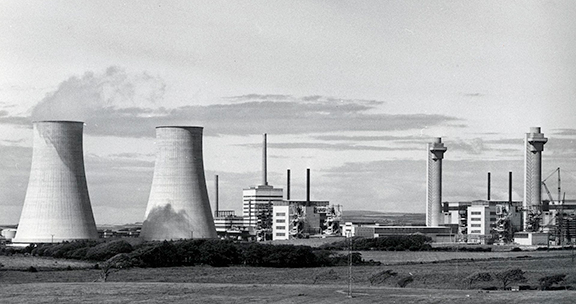When is lung cancer connected to asbestos exposure?

There are around 2,500 recorded deaths due to mesothelioma in England and Wales each year and research suggests that there are probably about as many asbestos related lung cancer deaths. However, lung cancer caused by asbestos exposure/industrial disease is often not identified and goes unrecorded.
Lung cancer is the second most common cancer in the United Kingdom with around 43,500 people diagnosed each year. The biggest cause of lung cancer is smoking but those diagnosed with lung cancer who are smokers, are often not even asked about asbestos exposure. No other potential cause for their lung cancer is considered. There are no specific clinical signs which indicate that a lung cancer is connected to asbestos exposure.
It is unlikely that your consultant will be able to tell you for certain whether or not asbestos has caused or contributed to your lung cancer. Detailed information regarding your employment history and occupational exposure to asbestos is needed. To claim compensation for lung cancer it must be proved that you have had exposure to high levels of asbestos dust. If you know you have had asbestos exposure in the past, even if you are or have been a smoker, you should seek specialist legal advice regarding the possibility of whether you may be able to pursue a claim for compensation.
What do I need to know?
1. All types of lung cancer can be caused by asbestos
It is important to remember that all types of lung cancer can be caused by asbestos exposure. The four main types are squamous cell carcinoma, adenocarcinoma, small cell carcinoma and large cell carcinoma. There is no difference in a lung cancer caused by asbestos exposure than there is by a lung cancer which for example may be naturally occurring or caused by another carcinogen such as tobacco smoke. The signs and symptoms are exactly the same.
2. You do not need to have been diagnosed with asbestosis
It is not necessary to have been diagnosed with asbestosis (fibrosis in the lungs caused by asbestos exposure) or any other asbestos related disease for your lung cancer to be related to your asbestos exposure.
3. There is a time lag between exposure to asbestos and diagnosis
There is a minimum period between exposure to asbestos and the development of a lung cancer. The minimum lag time is 10 years from your first exposure to asbestos to the development of a lung cancer so any exposure you may have had in the 10 years prior to your diagnosis will not have caused or contributed to the development of your condition.
4. Lung cancer can be related to asbestos even if you have smoked
Importantly, both smoking and asbestos can contribute to the development of your lung cancer. If you are a smoker or were a smoker in the past and you have also been heavily exposed to asbestos, you are at an even greater risk of developing lung cancer. The way tobacco smoke and asbestos work together, accelerates the risk of development of lung cancer. Sometimes patients are told that their lung cancer is due to smoking however if you have also been heavily exposed to asbestos then it is likely that both your past smoking habit and asbestos exposure have caused your lung cancer. It may be that if you had not been exposed to asbestos, you would never have developed lung cancer even though you are a smoker.
5. You need to show heavy exposure to asbestos to link it to lung cancer
The ‘Helsinki Criteria’ helps us to identify when a lung cancer can be linked to asbestos exposure. You either have to have been exposed to a certain level of asbestos due during your working life or have a certain level of asbestos fibres in your lungs, however obviously the latter cannot be identified during your lifetime. Lung cancer is a dose related disease meaning that the higher your asbestos exposure, the greater risk you are at of developing lung cancer. To attribute lung cancer to your asbestos inhalation the criteria requires:-
a. An estimated cumulative exposure to asbestos of:
• 25 fibre/ml years of exposure to blue and brown asbestos;
• 40 fibre/ml years of exposure to a mixture of blue, brown and white asbestos; or
• 100 fibre/ml years of exposure to only white asbestos.
These are engineering terms. To assess whether your exposure has met this level consideration has to be given to the type of asbestos you were exposed to, the likely concentration of asbestos dust in the air from the various tasks you were did and the duration and frequency with which you did the tasks. Remember that even if you were not always using asbestos or asbestos containing materials yourself, others working near to you may have been, exposing you to dust. Input from an expert engineer may be required to give an assessment however a level of 25 fibre/ml years is usually met when a person has had either one year of heavy exposure i.e. using asbestos every day for a year or 5-10 years of moderate exposure.
b. Alternatively, following your lifetime, if a post mortem examination is undertaken, samples can be taken of your lung tissue and tests done to establish how many asbestos fibres are in your lungs. If the tests show a certain number of asbestos fibres then this can also prove that your lung cancer has developed as a result of your asbestos exposure. However, fibre counts can sometimes give false negative results due to a number of factors. In particular, white asbestos breaks down and is not retained in the lungs over long periods of time. Through a process called clearance, blue and brown asbestos fibres are regularly clearing from the lungs, blue fibres every 6-7 years and brown fibres every 20 years. This means that as the years pass from your asbestos exposure, the number of fibres in your lungs is gradually reducing.
You will appreciate from this article, it is not easy to say whether a person's asbestos exposure has caused or contributed to the development of their lung cancer. However what is certain is that if you have had heavy and/or prolonged exposure to asbestos and are diagnosed with lung cancer you should seek specialist legal advice even if you have smoked and your doctor has not told you that your lung cancer may be linked to your asbestos exposure. Without detailed knowledge of your working life and likely level of asbestos exposure it will not be possible for your doctor to give you an opinion as to whether asbestos has played a part in your diagnosis.






